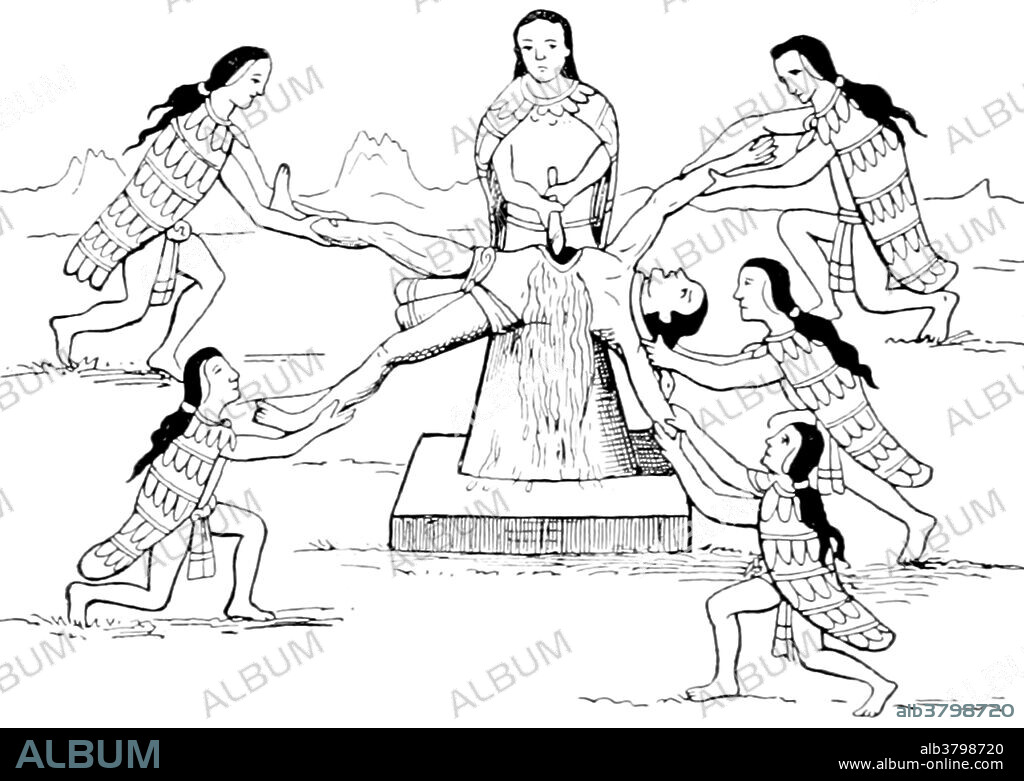alb3798720
Human Sacrifice, Pre-Columbian

|
Add to another lightbox |
|
Add to another lightbox |



Title:
Human Sacrifice, Pre-Columbian
Caption:
Human sacrifice was a religious practice characteristic of pre-Columbian Aztec civilization, as well as of other mesoamerican civilizations such as the Maya and the Zapotec. The Aztecs had 18 months in one cycle, and for each of the 18 months there was ritual sacrifice. The victim would be painted as a part of the ritual, they would be placed on a slab where their heart would be removed and held up to the sun. The body would be thrown down the stairs of the temple, the limbs were removed and later cooked. It's estimated that 20,000 humans were sacrificed by the Aztecs every year. Image taken from page 32 of "Kulturgeschichte Vierte Auflage" by Friedrich Anto Heller von Hellwald, 1896.
Credit:
Album / Science Source / British Library
Releases:
Model: No - Property: No
Rights questions?
Rights questions?
Image size:
4350 x 3091 px | 38.5 MB
Print size:
36.8 x 26.2 cm | 14.5 x 10.3 in (300 dpi)
Keywords:
1890S • 1896 • 19TH CENTURY • ANCIENT CIVILIZATION • ANCIENT CULTURE • ART • ARTWORK • BLOOD RITUAL • BLOODY • BW • CELEBRITIES • CELEBRITY • CENTRAL AMERICA • DRAWING • FAMOUS PEOPLE • FAMOUS • HEART REMOVED • HISTORIC • HISTORICAL • HISTORY • HUMAN SACRIFICE • ILLUSTRATION • ILLUSTRATIONS • IMPORTANT • MESOAMERICA • MESOAMERICAN RELIGION • MESOAMERICAN • NOTABLE • PRE-COLUMBIAN • PRIEST • PRIESTS • PRIMITIVE ART • PYRAMID • RELIGIOUS PRACTICE • RELIGIOUS RITUAL • RITUAL SACRIFICE • SACRIFICE, HUMAN • TEMPLE • WELL-KNOWN
 Pinterest
Pinterest Twitter
Twitter Facebook
Facebook Copy link
Copy link Email
Email

